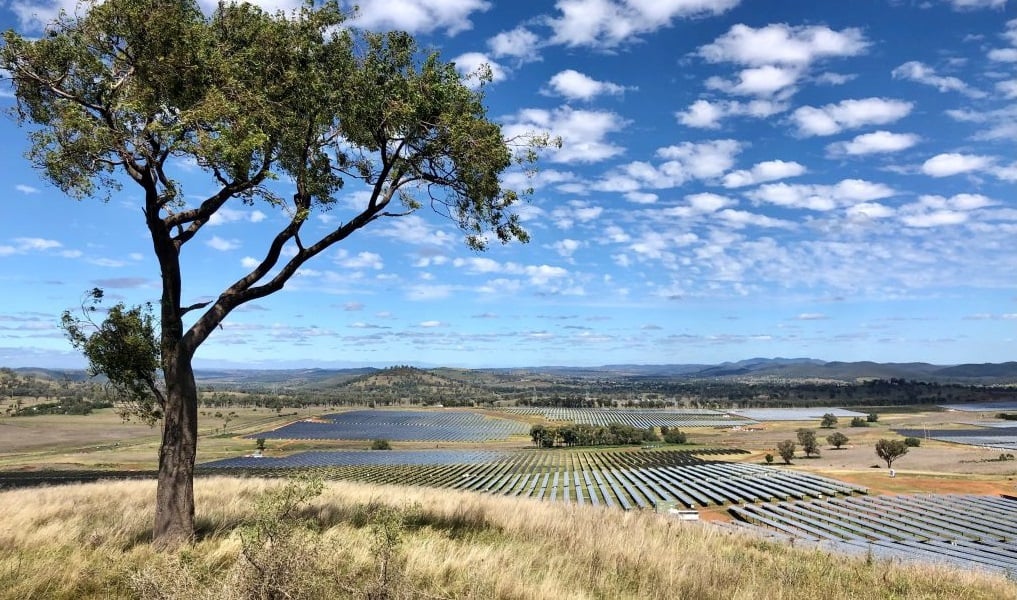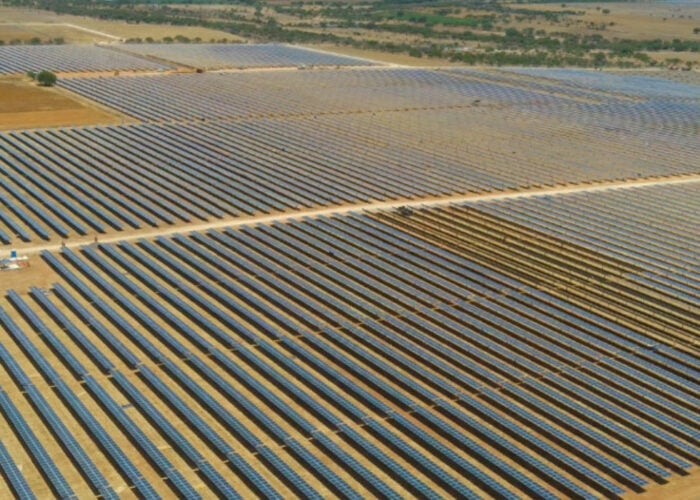
Lightsource bp has commenced work on a co-located battery energy storage system (BESS) at a 585MWdc solar PV plant in Australia.
The company, owned by the multi-national fossil fuel major bp, said the Goulburn River solar-plus-storage project, located near Merriwa, approximately 340km northwest of Sydney, represents one of the first large-scale direct current (DC) coupled solar-battery hybrid installations to enter construction in Australia.
Try Premium for just $1
- Full premium access for the first month at only $1
- Converts to an annual rate after 30 days unless cancelled
- Cancel anytime during the trial period
Premium Benefits
- Expert industry analysis and interviews
- Digital access to PV Tech Power journal
- Exclusive event discounts
Or get the full Premium subscription right away
Or continue reading this article for free
As part of the power plant’s hybridisation, Lightsource bp will add a 49MW/562MWh 10-hour duration BESS.
That said, several other DC-coupled solar-plus-storage sites have already been developed in Australia. Western Australia, for example, already has an operational DC-coupled hybrid site in the form of Green Power Generation’s 128MW Cunderdin hybrid solar PV and BESS project, which was inaugurated in early April 2025.
By connecting the battery on the DC side of the plant, the system will share inverters, transformers and a single grid connection with the solar array. This configuration offers several advantages over traditional AC-coupled systems, including improved efficiency, reduced equipment costs and enhanced flexibility in energy dispatch.
The battery component features approximately 10-hour duration capability, positioning it among Australia’s longest-duration grid-scale battery systems currently under construction.
Adam Pegg, country manager for Lightsource bp Australia and New Zealand, emphasised that the project demonstrates how long-duration energy storage (LDES) can firm solar generation, enabling coal plants to retire on or before schedule.
“By demonstrating that long-duration storage can firm solar generation, we can cover the peak periods and enable coal to retire on or ahead of schedule,” Peng said.
The hybrid project received federal backing through the Australian government’s Capacity Investment Scheme (CIS). Specifically, the project received backing in the first tender round, which saw solar PV awarded 2.8GW.
At the same time, the battery component is underwritten by a New South Wales Long-Term Energy Service Agreement (LTESA).
To read the full article, please visit Energy-Storage.news.






